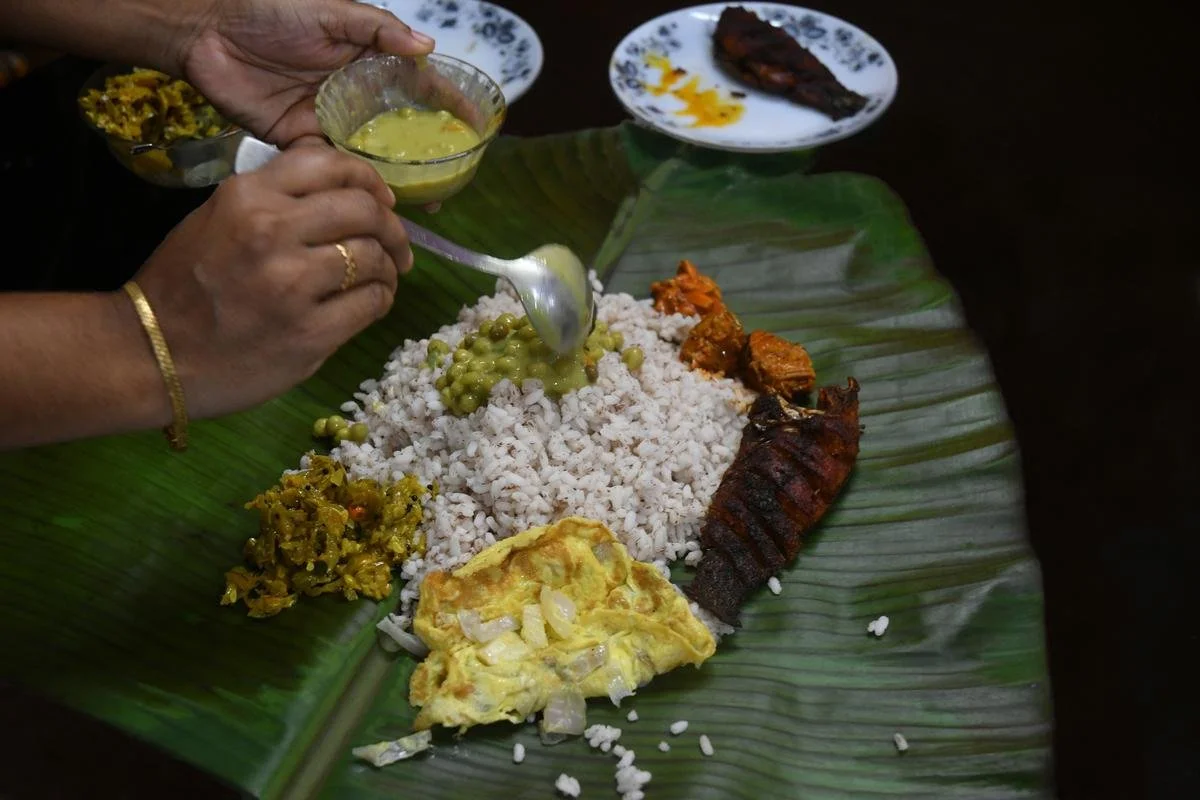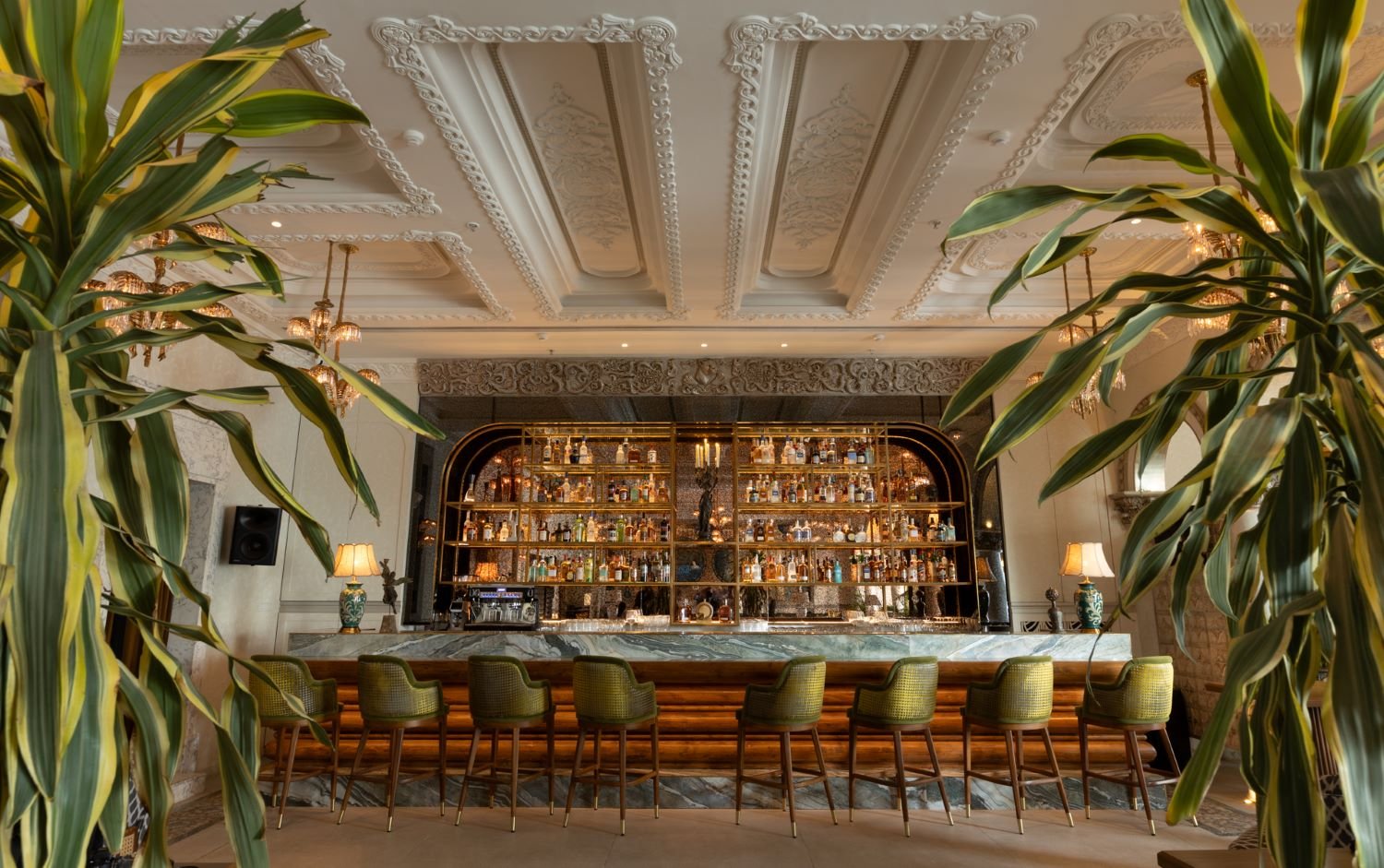Kolkata’s College Street Coffee House Brews More Than Just Coffee

Sugato Mukherjee on why Kolkata’s College Street Coffee House has remained an integral thread in the fabric of the city for decades.
I walk down College Street, along the uninterrupted corridor of used book stalls on the pavements and take the street opposite Presidency College. Past a small but cavernous doorway on my left, up a winding flight of stairs, into a large hall. A buzz of chatter drifts through the tobacco-coloured semi-darkness, from group of men and women seated around wooden tables. A squadron of turbaned waiters glide about like a seamless orchestra, replenishing supplies on the tables. The aroma of freshly ground coffee hits me as viscerally as the noise.
I have returned to College Street Coffee House, Kolkata’s iconic café, after nearly twenty years. The interiors have been spruced up with a coat of paint on the walls, adorned with frescoes and terracotta tiles, the cracks on the roofs are gone, and the doors and windows are gleaming with a fresh coat of shiny brown polish. A fresh, chic look masks its old-world ambience. But the hundred-odd people, seated around their tiny tables, gesticulating and talking animatedly, collectively reaffirm that Coffee House remains Kolkata’s refuge for caffeine-fuelled conversations.
The rambling mansion was built in 1876 to commemorate the visit of the crown prince of England, and was named Albert Hall, after him. The Coffee Board decided to start a coffee shop out of Albert Hall in 1942. After Independence in 1947, the Central Government rechristened it the Indian Coffee House, part of an expansive chain of about 400 outlets across the country.
The main hall, known as the House of Commons, has hosted generations of poets, writers and luminaries including Satyajit Ray, Allen Ginsberg, Gunter Grass and Dominique Lapierre
A Culture of Coffee and Creativity
But while most of other outlets remained a pitstop for a quick cup of coffee with friends and family, the Calcutta College Street house integrated itself into the city’s cultural landscape. The kilometre-long stretch of College Street housed some of the oldest and finest academic institutions in the country, besides being the hotbed of a thriving publishing industry. Nestled right in the heart of this hub, the café quickly turned into a melting pot of students, budding poets, aspiring artists and the literati. However, a drop in revenue and change in policy prompted the Coffee Board to shut down all their outlets in phases. In 1958, when College Street Coffee House closed its shutters, professors of the Presidency College and the Calcutta University rushed off a special petition to the government. By that time, a movement had taken shape in the form of the Indian Coffee Worker’s Cooperative Society, whereby workers formed a cooperative that would take over the running of the coffee houses. After remaining shut for a few months, College Street Coffee House reopened its doors that same year.
College Street Coffee House’s culture of creative energy has put it on the itinerary of every city visitor. From a young, beatnik Allen Ginsberg who, in the summer of 1962, spent most of his afternoons here with Jack Kerouac and a firebrand group of city poets, to Gunter Grass, who was a regular during his five-month sojourn in the 80s — this bustling two-storied hall with its rows of gently-revolving archaic ceiling fans, has seen it all.
“And the legacy has continued,” says Amit Sen. It is just past 11 on a Saturday morning and the place is already brimming. I couldn’t find myself a vacant table, and Sen generously offered me a place at his, as he waits for friends to arrive. A retired professor, the septuagenarian has been frequenting coffee house since 1966, when he was a college student himself — a daily haunt in those years. After retirement, Sen kept his routine, catching a train every Saturday from Uttarpara, a suburban town where he lives now, for a three-hour weekly session at the Coffee House, with friends who come together from across the city.
The Coffee House, opened in 1942, is housed inside a 300 year old building that belonged to Keshab Chandra Sen, a prominent figure of the Bengal Renaissance
The Regulars at the Coffee House
Sen points his walking stick discretely, and continues “There’s real estate brokers finalising deals with clients; people dropping by for a quick, cheap weekend snack; editorial meetings in all earnestness.” He smiles and points to a table near a window that overlooks the busy street below. A man, in his mid-thirties, is furiously typing on his laptop. “Anirban is working on his next theatre production. He left his teaching job in Canada three years ago, to continue his role as writer-director of a city-based theatre group. That table has been his workstation ever since.”
Sen’s friends arrive and I take leave, quickly finishing the cup of dark, strong coffee that my table-host had ordered for us. Black coffee is the staple drink for regulars here, and is simply called Infusion, extracted by percolation brewing in a traditional south Indian Indian filter. If you want milk coffee, they will stir in boiled (but not frothed) milk to the brewed infusion.
I climb up another floor, this one built in open-verandah style, and is fractionally more expensive than the lower-floor hall it overlooks. For reasons unknown, the lower floor remains the first choice for regulars, though the differential price of the food items never exceeds a paltry Rs. 5.
I spot Saikat, an old acquaintance, at a table in the far corner. He lives nearby, and always prefers his mid-morning cup here, before he begins his day job as an independent ad-man. I go up to his table and am introduced to his friend Susanne, a New-York based copywriter.
Saikat is something of a coffee connoisseur, and he knows that the coffee profile here isn’t quite the brew served at artisanal cafes, where quality is the operative word and the roaster is willing to pay a premium to support the quality. The burgeoning coffee scene in India is witnessing an emphasis on the fine craft of custom-brewed, single-origin coffee. The Indian Coffee House is not quite in step with that trend, still working with blended coffee, beans sourced from the Coffee Board, from plantations in Coorg and the Nilgiris, at a subsidised price point. The beans are never ground to individual orders.
Thick stuffing of chicken inside a crust made of bread and eggs - Chicken Afghani, dipped in a tangy gravy remains a favourite among regulars
Despite this, Saikat has his first cup of the day here. “The tidbits of conversations on film, theatre, poetry wafting in from the tables around, sort of kickstarts my day.” It’s the same with many of the young folk, Saikat tells us. “They prefer these antiquated interiors to newer, swankier joints.” Susanne adds, “it reminds me of the scruffy charm of the spoon cafes of New York, back in the 1950s”.
Chicken Afghani - A House Delicacy
A liveried waiter in a well-worn but starched uniform, red-and-gold turban with a sash around the midriff, approaches our table with a menu. A laminated single page lists the same dishes that have been on offer for decades. I order a chicken sandwich and a cold coffee. It is the no-frills, classic chicken sandwich with a coat of butter and a generous layer of seasoned, boiled chicken; perfectly complemented with a good old-fashioned cold coffee — chilled, served in a tumbler. I decide to end with the house delicacy, Chicken Afghani. A deep-fried chicken cutlet, with a crispy, fluffy crust of whisked egg, drenched in a hot, thick tomato-based brown gravy. As I take in a mouthful, I realise more than a few things at the College Street Coffee House have remained unchanged.
Sugato Mukherjee is a Kolkata-based journalist with bylines in a number of national and international publications; he writes on travel, food, culture and humanitarian stories.
Banner image: Barcroft
ALSO ON THE GOYA JOURNAL










